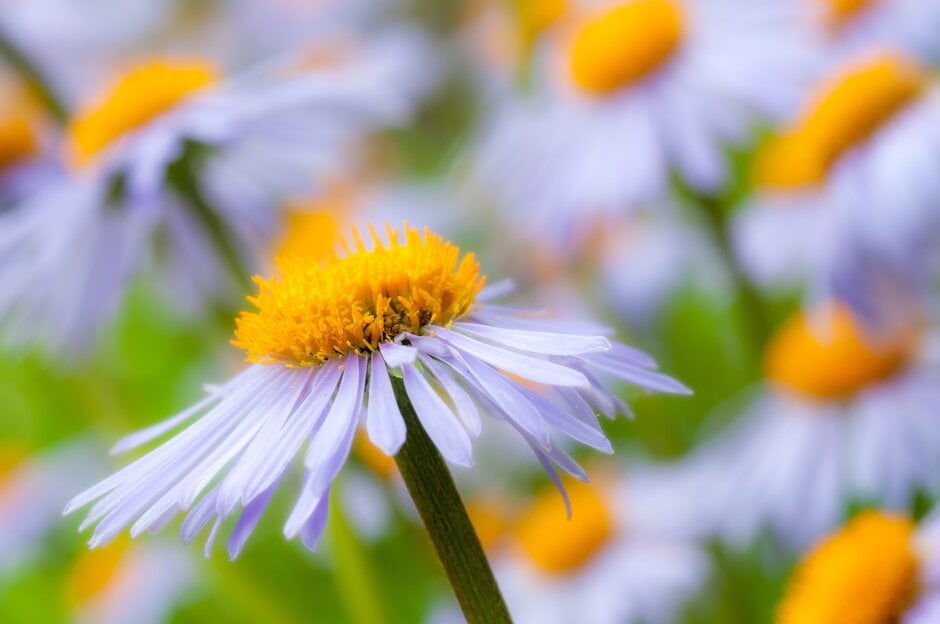Size
Ultimate height
0.1–0.5 metresTime to ultimate height
2–5 yearsUltimate spread
0.1–0.5 metresGrowing conditions
Moisture
Moist but well–drained, Well–drainedpH
Acid, Alkaline, NeutralColour & scent
| Stem | Flower | Foliage | Fruit | |
| Spring | Green | |||
|---|---|---|---|---|
| Summer | Orange Yellow Purple Blue | Green | ||
| Autumn | Green | |||
| Winter |
Position
- Full sun
Aspect
North–facing or East–facing or South–facing or West–facing
Exposure
Exposed or Sheltered Hardiness
H6Botanical details
- Family
- Asteraceae
- Native to GB / Ireland
- No
- Foliage
- Deciduous
- Habit
- Matforming
- Genus
Aster can be perennials, annuals or subshrubs, mostly with narrow leaves, and solitary or clustered, daisy-like flowers
- Name status
Correct
- Plant range
- China
How to grow
Cultivation
Grow in moderately fertile, well-drained soil in an open sunny position
Propagation
Propagate by seed in pots in cold frame in spring or autumn or propagate by division in spring
Suggested planting locations and garden types
- City and courtyard gardens
- Cottage and informal garden
- Gravel garden
- Rock garden
- Flower borders and beds
Pruning
Cut back after flowering
Pests
May be susceptible to slugs, snails, leaf and bud eelworms and aphids
Diseases
May be subject to wilts, leaf spot and grey moulds
Love gardening
Sign up to receive regular gardening tips, inspiration, offers and more
View our Privacy Policy
Get involved
The Royal Horticultural Society is the UK’s leading gardening charity. We aim to enrich everyone’s life through plants, and make the UK a greener and more beautiful place.
